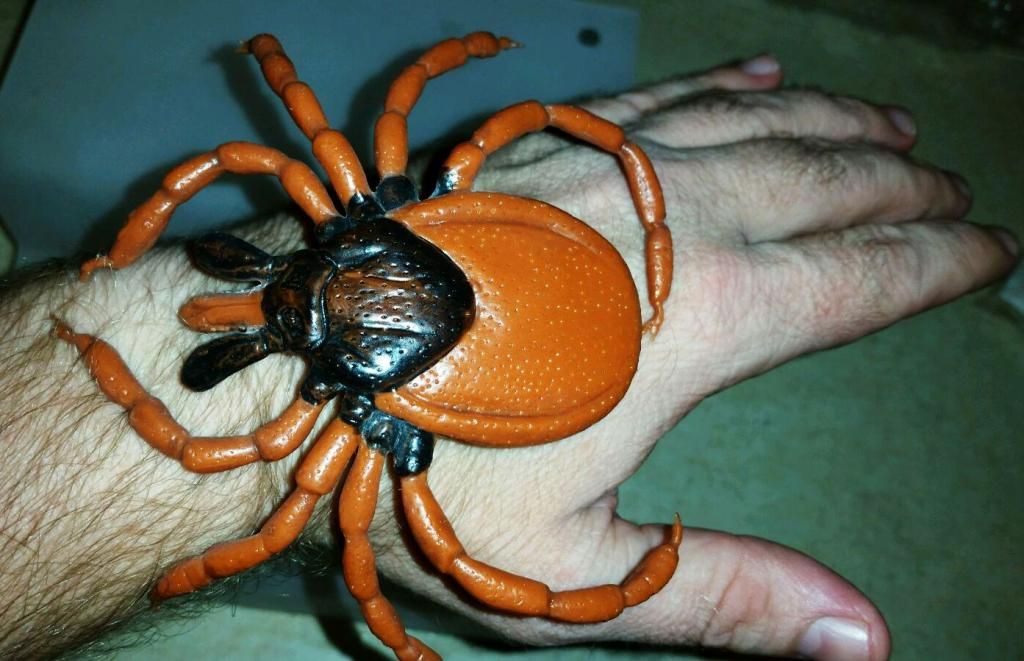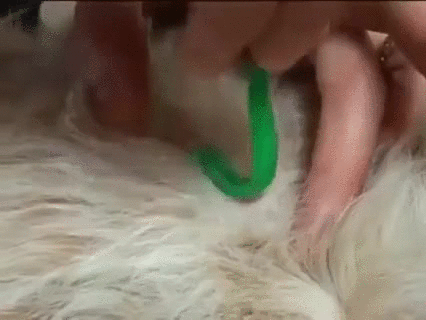
Yep -- soon as Spring arrives, the dangers of ticks abound!
The U.S. National Tick Collection (USNTC) is the largest collection of ticks!
The collection is located at the Institute for Coastal Plain Science in Statesboro, Georgia.
Website:
http://cosm.georgiasouthern.edu/icps/collections/the-u-s-national-tick-collection-usntc
The facility includes fully equipped morphological & molecular
laboratories. Specimens & their associated data are used for original
scientific research on the systematics, evolutionary history, &
population genetics of ticks & their related pathogens. Staff members
are involved in morphological & molecular studies of target taxa. The research carried out at the USNTC, since its
transfer to Georgia Southern, generated hundreds of publications written
by the curators & associated scientific collaborators & visitors.
Since 2005 the curators were involved in over 50 presentations in
national & international peer-reviewed meetings. In addition to their
basic taxonomic research, the curators are also revising all USNTC
holdings, in order to make them progressively available to the research
community & the public through the Smithsonian Entomology Collection
web site.
. In order to prepare new generations of taxonomists it is,
therefore, essential to include students in our curatorial & research
activities. In the last 6 years, about 16 undergraduate & 9 graduate
students from Georgia Southern benefited from the USNTC resources while
carrying out their Biology research projects (4890, 7890, honor student
thesis, master thesis). The curators are involved in teaching in a
number of external workshops & summer programs, in particular the Ohio State University Summer Acarology Program:
The program has 3 elements, research, teaching (
the Acarology Summer Program), & the
Ohio State University Acarology Collection (OSAL). Research involves
collection based projects
on mite systematics, with basal Parasitiformes as the main focus. The
Acarology Summer Program is currently the longest running program for
training in identification of mites & ticks in the world.
Finally,
the OSAL collection is the most diverse (taxonomically) mite collection
at any North American university. Although focused on Acari, it
includes secondary collections of spiders & other arachnids.
contact:
123 Derby Hall
Columbus OH, 43210
Link to University's collection:
http://acarology.osu.edu/database
Visiting the USNTC (US National Tick Collection):
The USNTC is open on Tuesday & Thursday: 2 pm – 4 pm. All other
times are by appointment only. Contact Colleen Evans, Collections
Manager, (
crevans@GeorgiaSouthern.edu) to set up an appointment. All educational groups must schedule an appointment with the collections manager before visiting.
Phone: (912) 478-5564
Fax: (912) 478-0559
Mailing Information
The U.S. National Tick Collection
P.O. Box 8056
Statesboro, GA 30460
Shipping Information
The U.S. National Tick Collection
69 Georgia Avenue
Statesboro, GA 30460
With over 125,000
accessioned lots, over one million specimens, their associated data, & an extensive library (reprints, monographs, & books), the U.S.
National Tick collection is one of the largest curated tick collections
in the World, if not the largest. It belongs to the U. S. National
Museum of Natural History (Smithsonian Institution) & has been housed
at Georgia Southern University since 1990.
The collection contains
specimens from all continents, most of the approximately 860 known
species of ticks, & a quarter of the primary tick types.
Ticks (Ixodida) are
haematophagous mites (Acari). During their blood meal, ticks can acquire &/or transmit a number of microorganisms, some of which can cause
diseases in humans, domestic & wild animals. Because of the impact of
ticks on human & veterinary medicine, the USNTC isn't only a
significant resource of material & information for tick taxonomists
but also for public health officials.







